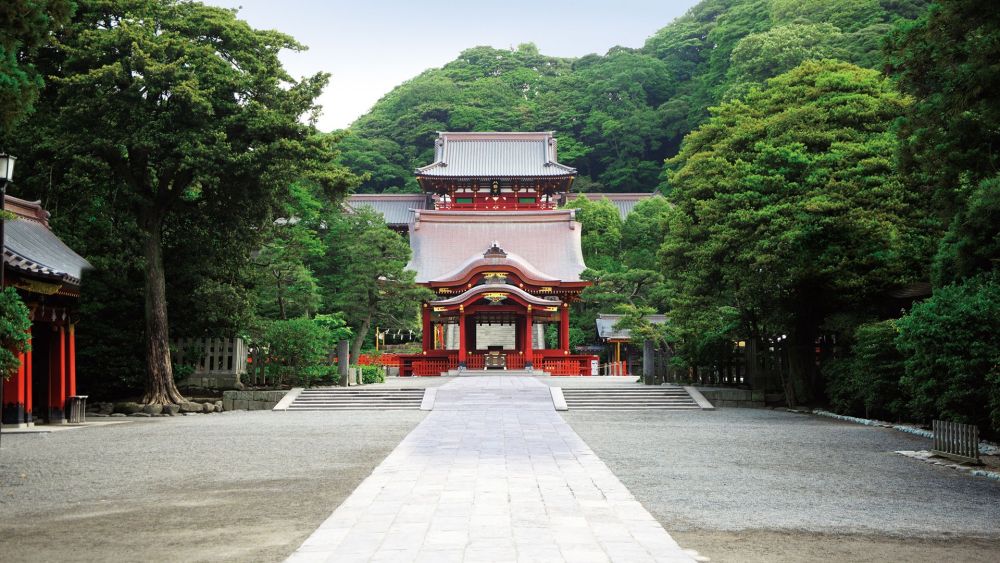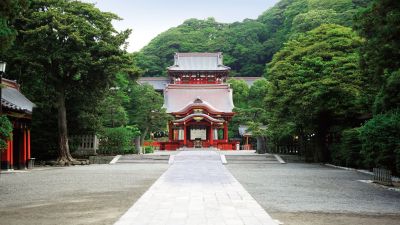

Experience the traditional Japanese tea ceremony in the serene ambiance of Tsurugaoka Hachimangu Shrine. The tea ceremony, also known as 'sado' or 'chanoyu,' is a ritualistic preparation and presentation of matcha, the powdered green tea. This activity allows visitors to appreciate the meticulous art form, which embodies harmony, respect, purity, and tranquility. Participants will learn about the cultural significance of the ceremony, the utensils used, and the precise movements and gestures involved in serving and receiving the tea. This immersive experience provides a unique opportunity to understand and appreciate an integral part of Japanese culture in a historic and spiritual setting.
The Tsurugaoka Hachimangu Shrine offers visitors a chance to partake in Kyudo, the traditional Japanese archery. This workshop is held at the shrine's archery range, where trained instructors introduce participants to the basics of this martial art. Kyudo is not only about shooting arrows but also about achieving a state of Zen through concentration, controlled breathing, and smooth, graceful movements. The activity is suitable for beginners and provides a deeply cultural experience that emphasizes focus, posture, and the spiritual connection between the archer and the bow. Engage in this mindful practice in a setting that has witnessed the art of archery for centuries.
Take a guided tour of the Tsurugaoka Hachimangu Shrine, one of Kamakura's most significant religious sites. As you stroll through the grounds, your knowledgeable guide will share the history and cultural importance of the Shinto shrine, which was established in the 11th century. Observe the beautiful architecture of the Main Hall and Maiden, explore the various subordinate shrines, and take in the peaceful ambiance of the lotus pond and the Genpei ponds, which symbolize the Minamoto and Taira clans. The tour also includes tales of Minamoto no Yoritomo, the founder of the Kamakura shogunate, and an explanation of Shinto rituals and festivals that are held at the shrine throughout the year.
Enhance your visit to Tsurugaoka Hachimangu Shrine by dressing up in traditional Japanese attire from the Kamakura period. There are various rental shops in the vicinity of the shrine where visitors can select from a range of costumes, including samurai armor, elegant kimonos, and attire befitting nobility of ancient Japan. After being dressed by professional staff, you can walk around the shrine and its beautiful surroundings, feeling transported back in time. It's a fantastic way to immer and indulge in the historical atmosphere of Kamakura. Many visitors enjoy taking photographs against the stunning backdrop of the shrine and gardens.
Partake in 'Hatsumode', the first Shinto shrine visit of the New Year at Tsurugaoka Hachimangu. During the first few days of January, Japanese families come to the shrine to offer prayers for good health, happiness, and prosperity for the coming year. Visitors can join the locals in this spiritual tradition, purchase 'omamori' (amulets) for good luck, receive 'omikuji' (fortune-telling paper slips), and enjoy festive food sold at the shrine. This ancient practice provides a unique glimpse into the living traditions of Shintoism and a chance to start your own year with a meaningful and culturally rich experience.
The Tsurugaoka Hachimangu Shrine hosts several festivals throughout the year, attracting both pilgrims and tourists. One of the most notable is the Reitaisai, held in September, which is marked by a procession of mikoshi (portable shrines) and yabusame, the impressive horseback archery ritual. The shrine grounds come alive with traditional music, dance performances, and ceremonial practices. Attending one of these festivals offers visitors an opportunity to witness Japan's living traditions and participate in age-old customs. The experience is enriched by the vibrant displays, local culinary delights, and the communal spirit that embodies these lively events.
Find tranquility at the Tsurugaoka Hachimangu Shrine by participating in a Zen meditation session. These sessions, typically held in a quiet portion of the shrine or in a nearby temple, allow visitors to learn the principles of Zen meditation from experienced monks. Sessions often include breathing techniques, posture guidance, and methods to quiet the mind, providing a respite from the hustle and bustle of daily life. In the serene environment of this sacred place, you can delve deep into mindfulness practice, gain insight into Buddhism, and experience a sense of peace that is central to Japanese spirituality.
Engage in a variety of cultural workshops that are frequently organized at the Tsurugaoka Hachimangu Shrine. These workshops may include activities such as calligraphy, ikebana (flower arranging), and traditional music lessons. Under the guidance of skilled practitioners, participants can learn about and practice these cultural arts firsthand. The workshops are designed for visitors of all skill levels, and they offer a creative and tactile approach to understanding Japanese culture and art forms. The skills and knowledge gained during these workshops provide lasting memories and a deeper connection to the traditional practices of Japan.
Join a photography tour around the picturesque Tsurugaoka Hachimangu Shrine, which offers endless opportunities for capturing stunning shots. Whether you're a beginner or an avid photographer, these tours led by professional photographers will help you find the best angles and compositions to photograph the striking architecture, lush gardens, and Shinto rituals. Participants will also receive tips on lighting, camera settings, and creative approaches to visual storytelling. This is an ideal way to document your visit to one of Japan's iconic spiritual centers and leave with a personal gallery of professional-looking photographs.
Collecting 'goshuin', the unique seal stamps given at temples and shrines, is a popular activity for visitors to Tsurugaoka Hachimangu Shrine. A 'goshuincho' (stamp book) can be purchased at the shrine or at nearby religious goods shops. As you explore the shrine, you can receive a goshuin in your book, which is a combination of red stamps and beautiful calligraphy, usually including the name of the shrine and the date of the visit. This activity not only serves as a spiritual memento of your pilgrimage but also becomes a beautiful keepsake showcasing the artistry of Japanese temple and shrine calligraphy.
